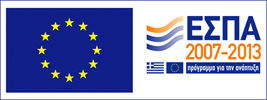The aim of modern medicine is the early diagnosis, if possible before disease effects become evident, as well as the selection of the most suitable therapeutic scheme for each patient. Molecular Imaging with radionuclides offers a very sensitive diagnostic tool, capable of imaging molecular mechanisms, before anatomical changes become visible. In addition, radionuclides play an important role in cancer therapy, while they can be simultaneously imaged with PET or SPECT. The optimization of both diagnostic and therapeutic approaches, requires the use of personal data, since this information affects several parameters related both to image acquisition and radiotherapy protocols. The use of anthropomorphic phantoms, provides a robust tool for the design of clinical protocols, the development of correction algorithms, as well as modelling of physical parameters such as heart and respiratory motion. The evolution in small animal imaging has raised similar questions and needs in preclinical research.
The Development of realistic computational models for the optimization of diagnostic and therapeutic protocols project aims to develop realistic computational models for the optimization of diagnostic and therapeutic protocols. The main goal of this work will be the creation of a realistic PET and SPECT simulated database incorporating patient and small animal-specific variability. The NCAT anthropomorphic and MOBY mouse phantom will be adapted to CT acquisitions to reproduce their specific anatomy, while the corresponding PET or SPECT acquisitions will be used to derive the activity distribution of each organ of interest. In addition, realistic tumour shapes with homogeneous or heterogeneous activity will be modelled based on segmentation of the PET (SPECT) tumour volume and incorporated in the patient/animal specific models. Finally, respiratory and heart motion will be included in the model. GATE will be used to generate simulated images, whose accuracy will be assessed in comparison to the original clinical and preclinical images.
The collaborating groups have complementary expertise to carry out this interdisciplinary project, including access to clinical scanners and preclinical prototypes, expertise in manipulation of computational models and computer intensive simulations and analysis and interpretation of clinical data.
You can access the ONCO database from the Activities submenu.
 This project has been co-financed by
This project has been co-financed by